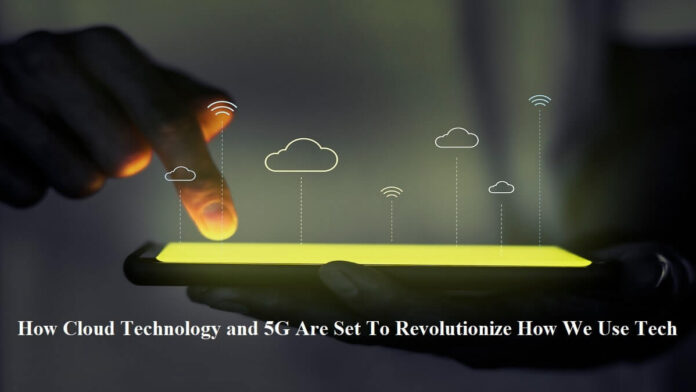In recent years, cloud computing has been one of the fastest-growing sectors of the entire computer and tech industry.
As more and more companies increasingly migrate their digital provision to cloud computing companies, the number and scope of available services will only continue to keep growing.
But just what is cloud computing and how is it changing the worlds of commerce and tech as we know them?
Table of Contents
Cloud Computing – The Next New Age of Computer Services?
By definition, cloud computing is the provision of computer services – anything from processing to storage or running applications – typically delivered over the internet, normally on a pay-as-you-go basis.
By relying on the power of remote computers, cloud subscribers can perform highly complex tasks, regardless of the capacity or power of the device they might have to hand.
There are already multiple cloud computing companies in operation offering varying packages and services with the biggest players currently being AWS, Azure, and Google. To get a greater understanding of how these services work, check this AWS tutorial.
As a basic example, a cloud services subscriber can tap into a remote server (on even the most underpowered hand-held), use its processing power to complete a task, then have the results sent back to their device. Of course, in this model, the only real limitation in these services is the delivery vehicle itself – which is, handily, where 5G steps up.
The Rollout of 5G
5G is the next logical step in the connectivity of our devices. As computing increasingly goes mobile (it’s estimated over 50% of all web use is now made on handheld devices and wearables), so the need for faster wireless connections has grown.
5G promises many leaps forward in terms of how we connect. With 5G’s larger channels, we’ll see vastly quicker connections speeding up the transfer of data while the lower latency of the tech will also make everything more responsive.
Lastly, 5G also allows more devices to be connected at the same time – for example, sensors, cameras, and compatible smart devices.
In many larger cities and more developed nations, 5G is already in widespread use. However, just like 4G before it, the value of this new tech won’t fully take hold and be realized for a few more years yet.
We’re currently in somewhat of a halfway house at the moment where we have 5G tech but without the promised 5G experience.
Just like 4G, apps will take time to port over to these newer connection speeds – indeed, many may not have even been invented yet. If you look back, 4G was first announced in 2010 but it took a couple of years before the apps that relied on 4G took off. For example, it would take until 2012 for Snapchat to launch while video-calling and apps like Uber didn’t arrive until 2013.
New tech always takes time to find a place and an audience – and that’s exactly what we’re seeing with today’s 5G capabilities.
The Potential of 5G and The Cloud Together
There are two great limitations with our supposedly portable devices that, until very recently, have largely slowed the mobile computing revolution:
Battery Power – While there are finally some advances being made in the power of batteries, it would be fair to say the biggest achievements have been made by device manufacturers moving to vastly more economical processors, thereby reducing the power drain. Moreover, as we demand smaller and smaller devices, battery space will continue to be compromised.
Storage and Processing Power – By default, a smaller device has less space for components – yet our insatiable thirst for powerful micro-devices continues.
By connecting to cloud services over 5G networks, we can largely sidestep both of these issues by using remote processing and storage, which also cuts the drain on our local devices. Sizes can get smaller as storage and processing are handled elsewhere while the load put on batteries also drops considerably since the apps are running on remote machines.
Some Predictions For How 5G and Cloud Services Will Change Tech
Drawing on the processing power of remote machines has considerable advantages when compared to relying on local resources and could herald a completely new dawn in terms of how and where we use tech. Moreover, these services combined have the potential to transform computing as we know it:
Devices Becoming Little More Than an Interface: Due to the impending ubiquity of 5G services, industry insiders are increasingly looking at the potential for connections to be contained natively in devices, which could bring massive advances in the potency and power of our tech.
For example, at the moment, if you want to connect a laptop on the go, you’ll typically have to hook it up to your cell phone and share the connection. However, if that connection was held inside the laptop, it would come internet-enabled – and with the spread of 5G, this would mean an always-on connection.
If this same laptop was also connected to a cloud computing service, it could essentially become little more than a keyboard and screen.
The work of the internal processors, RAM, powerful graphics cards, etc, could all be handled remotely, resulting in truly scaled-back, minute-form mobile devices.
The Age of the Truly Remote Workforce: The lockdowns and isolation enforced by the recent coronavirus outbreak forced many companies to take a step back from the way they previously worked and re-evaluate their processes.
With employees having no choice but to work from home, we saw the en masse migration to cloud services as companies came to rely on the tech to operate.
With the seeds now sown, it seems likely the workers of the future will demand more flexibility in how and where they work – with cloud computing and 5G providing the perfect solution.
The Growth of the IoT: Much has been made of the potential for connected tech (the so-called Internet of Things or IoT) to change our world but the previous limitations of slower connection speeds simply couldn’t handle the idea of hooking up multiple smart devices over a wide area.
With today’s tech capable of sending, receiving, and processing data autonomously over cloud services and 5G connections, we stand on the threshold of a truly smart connected era of computing.




